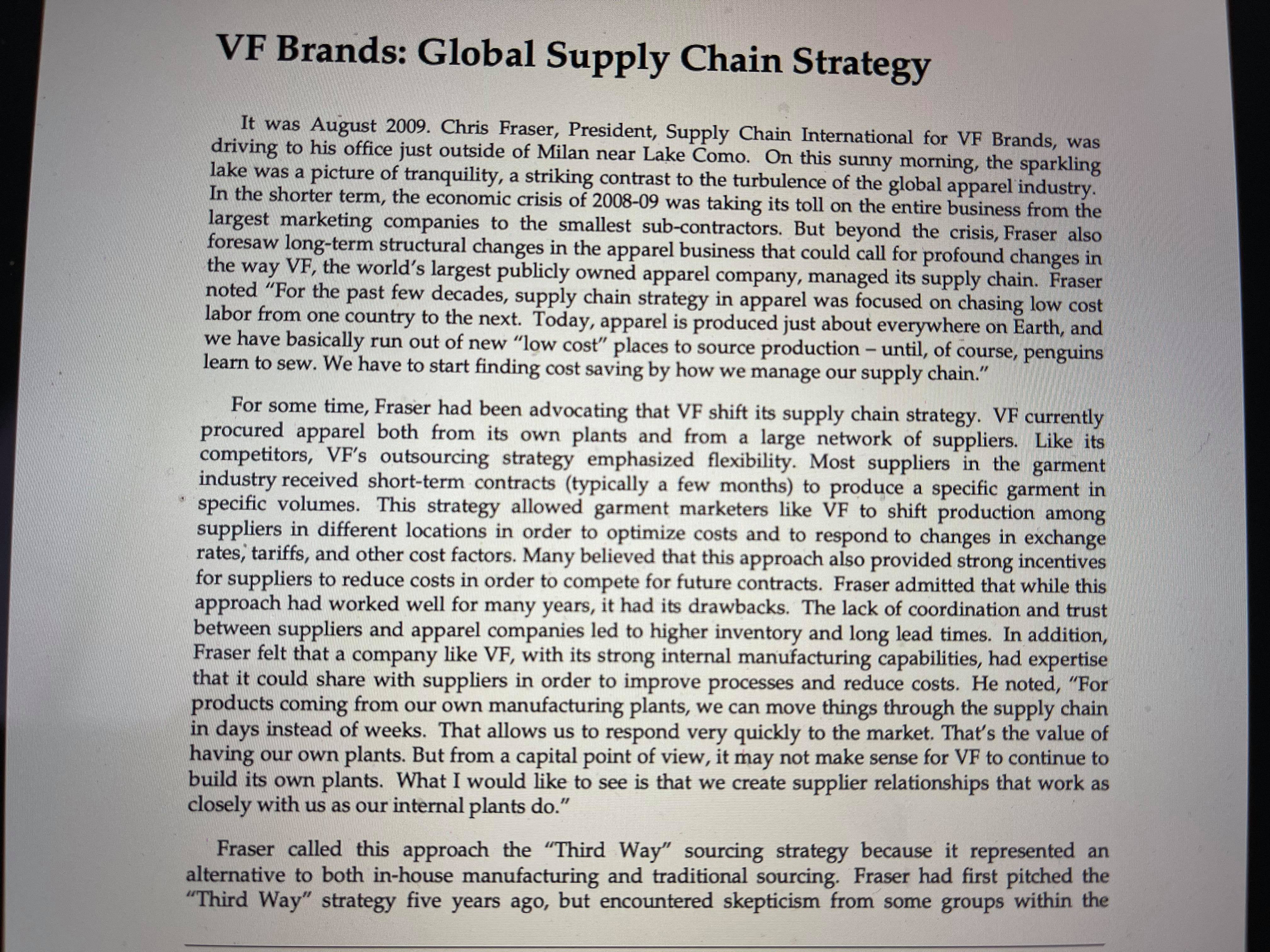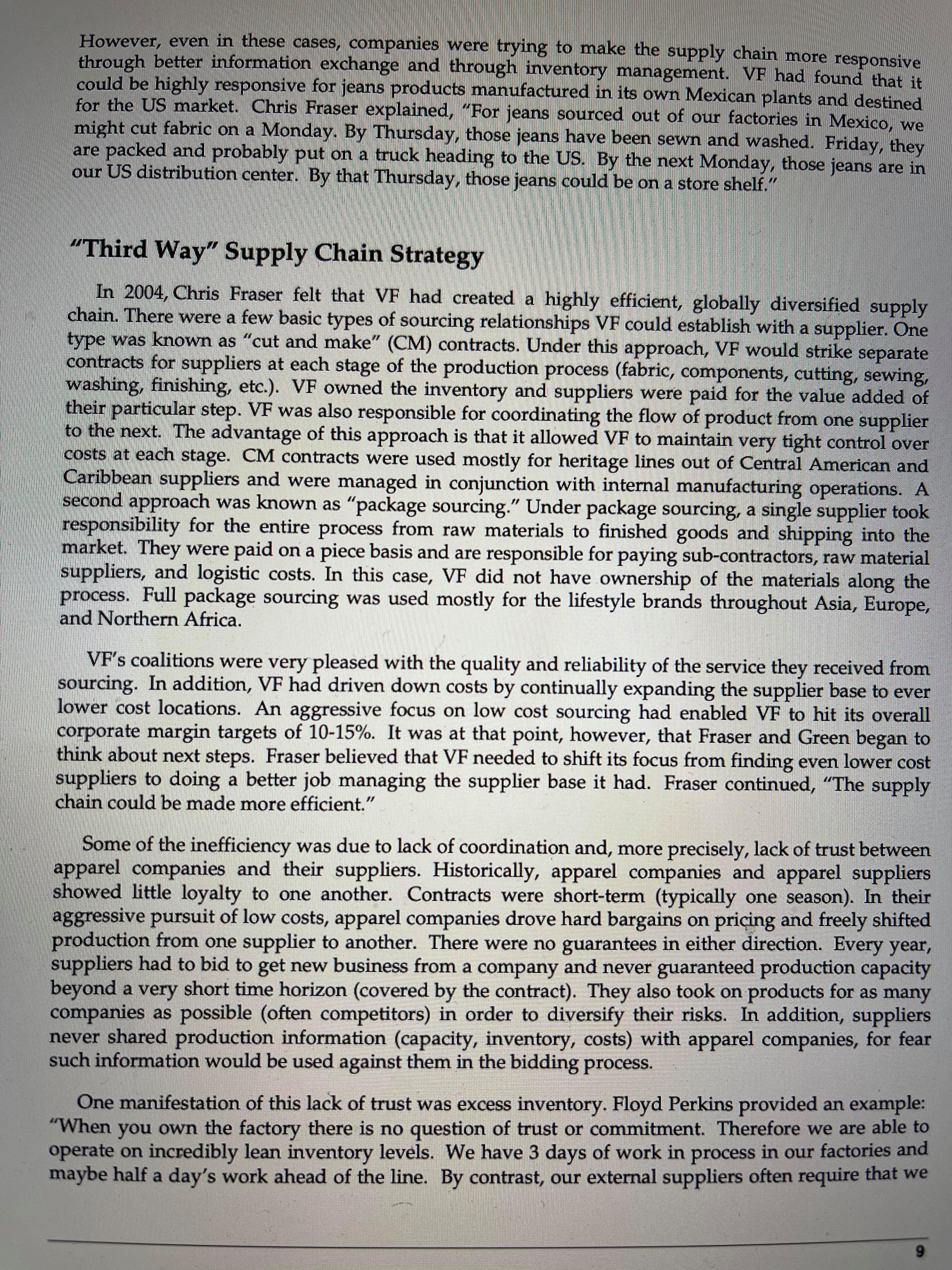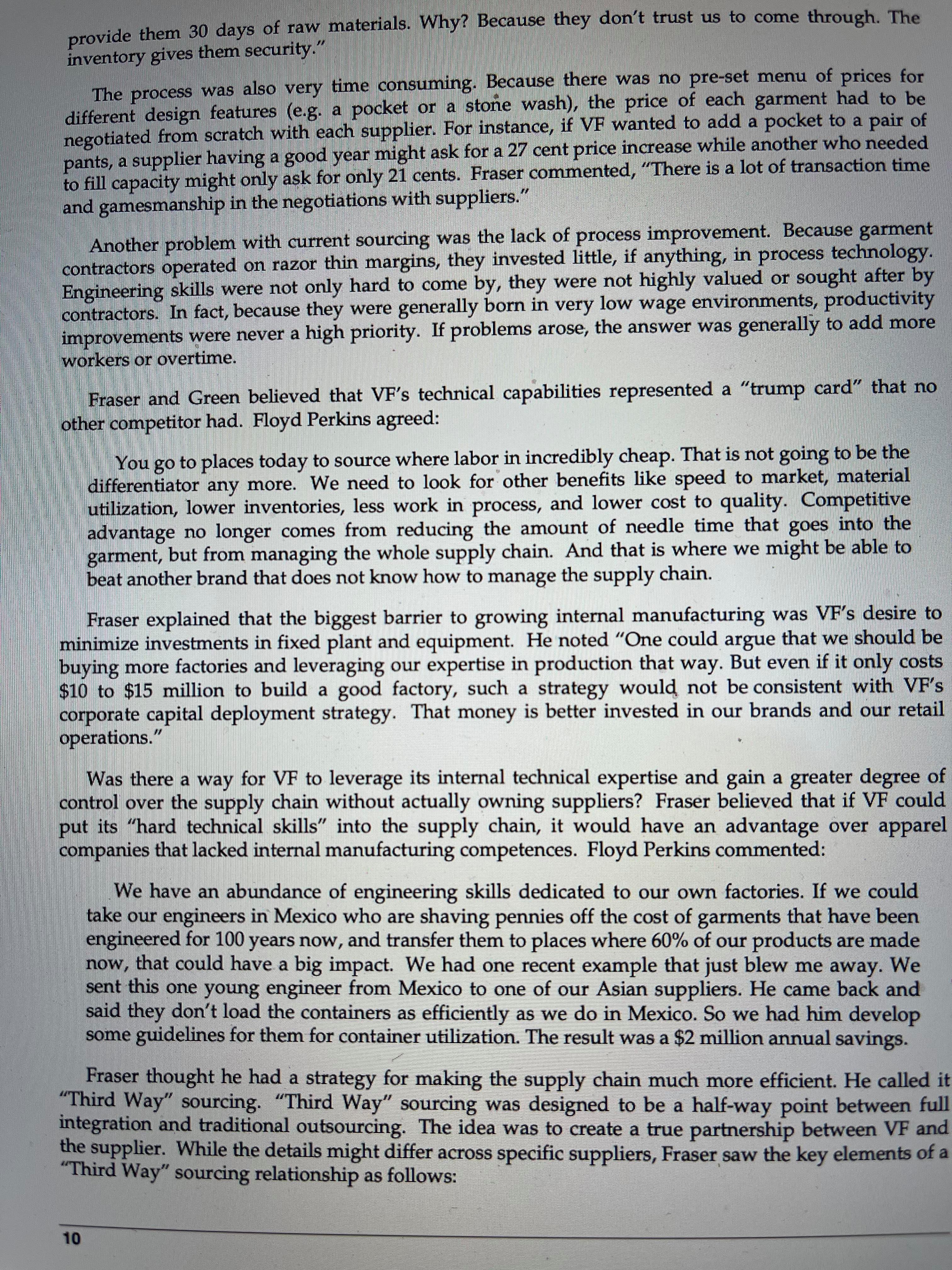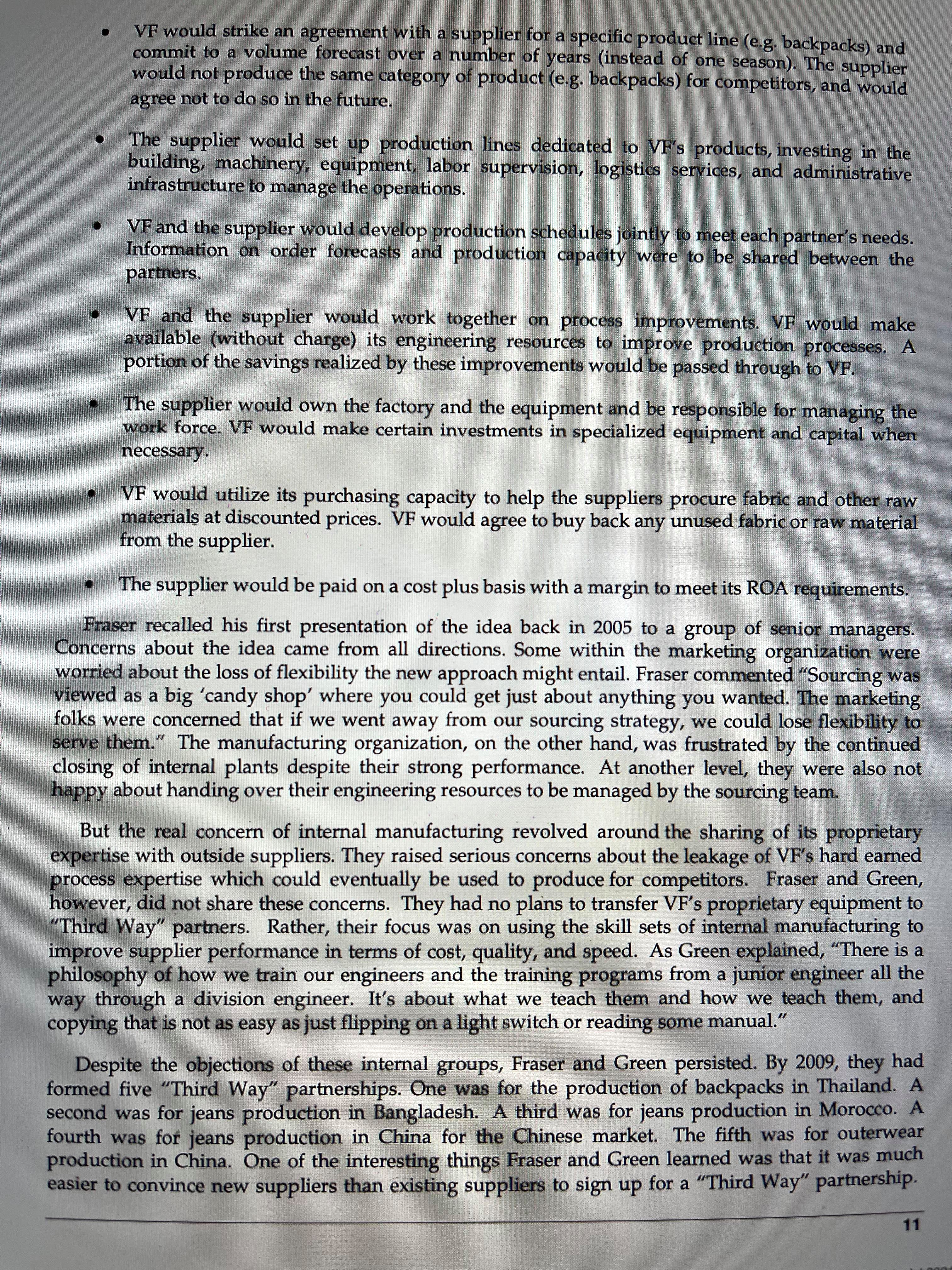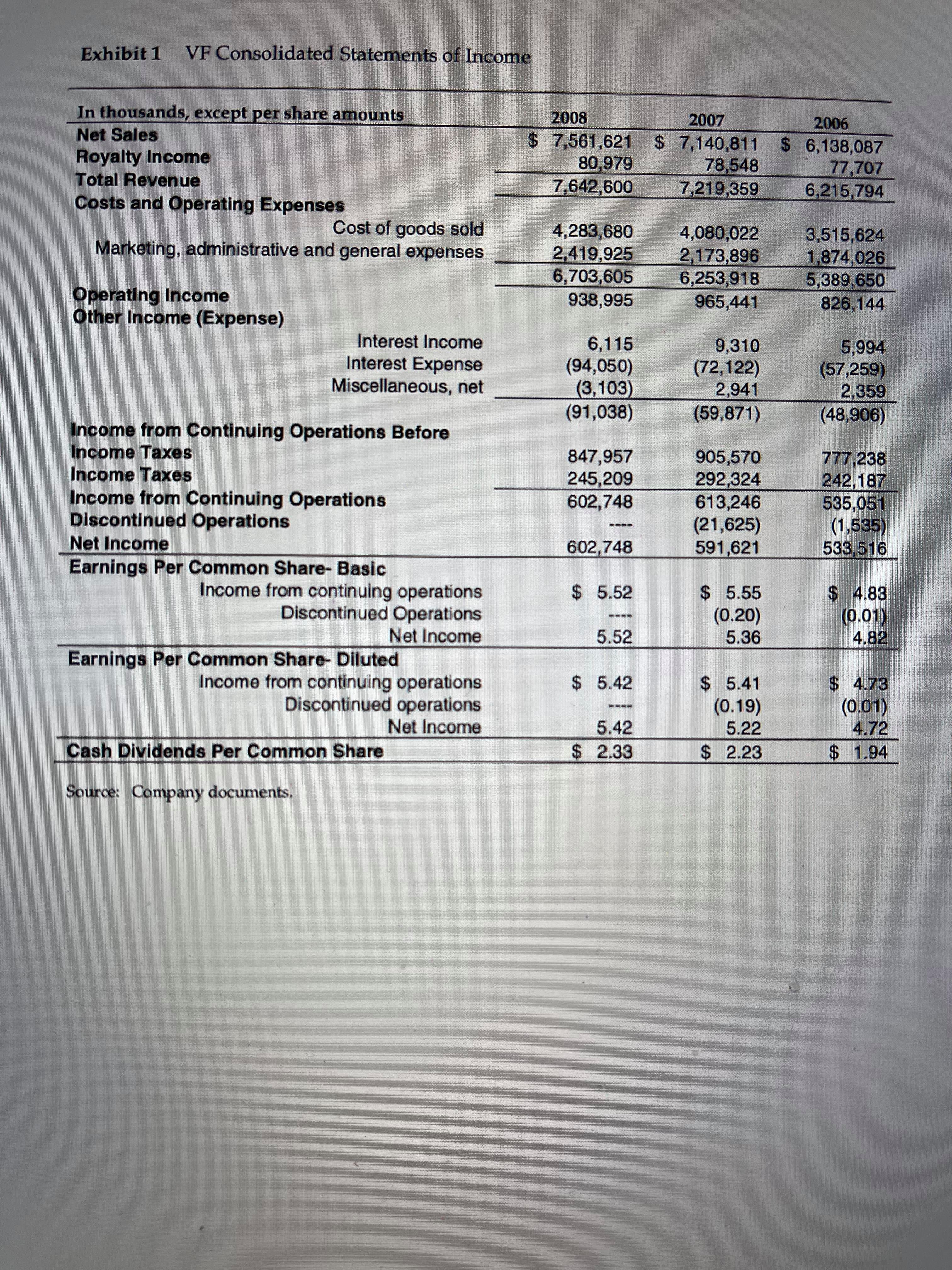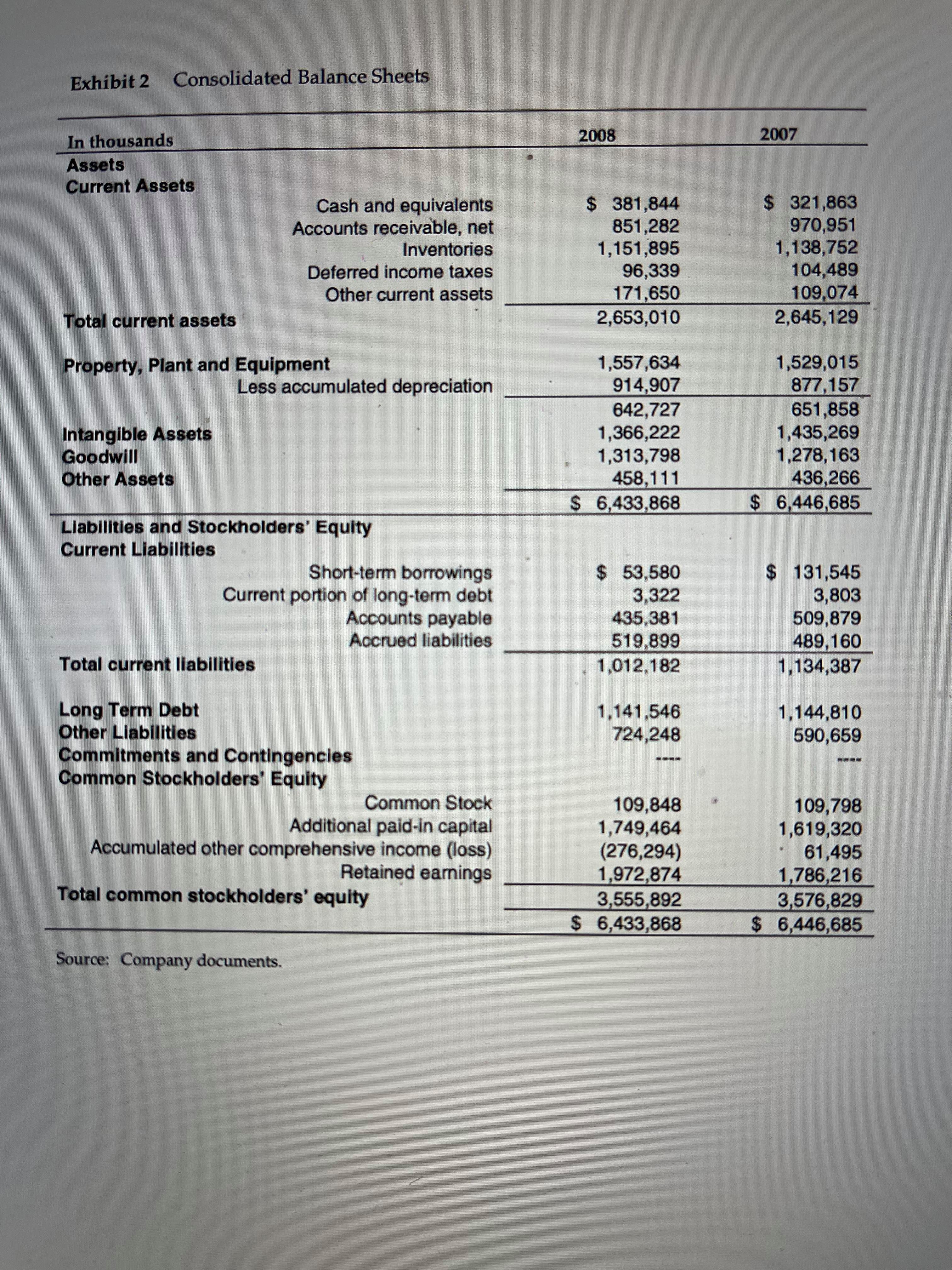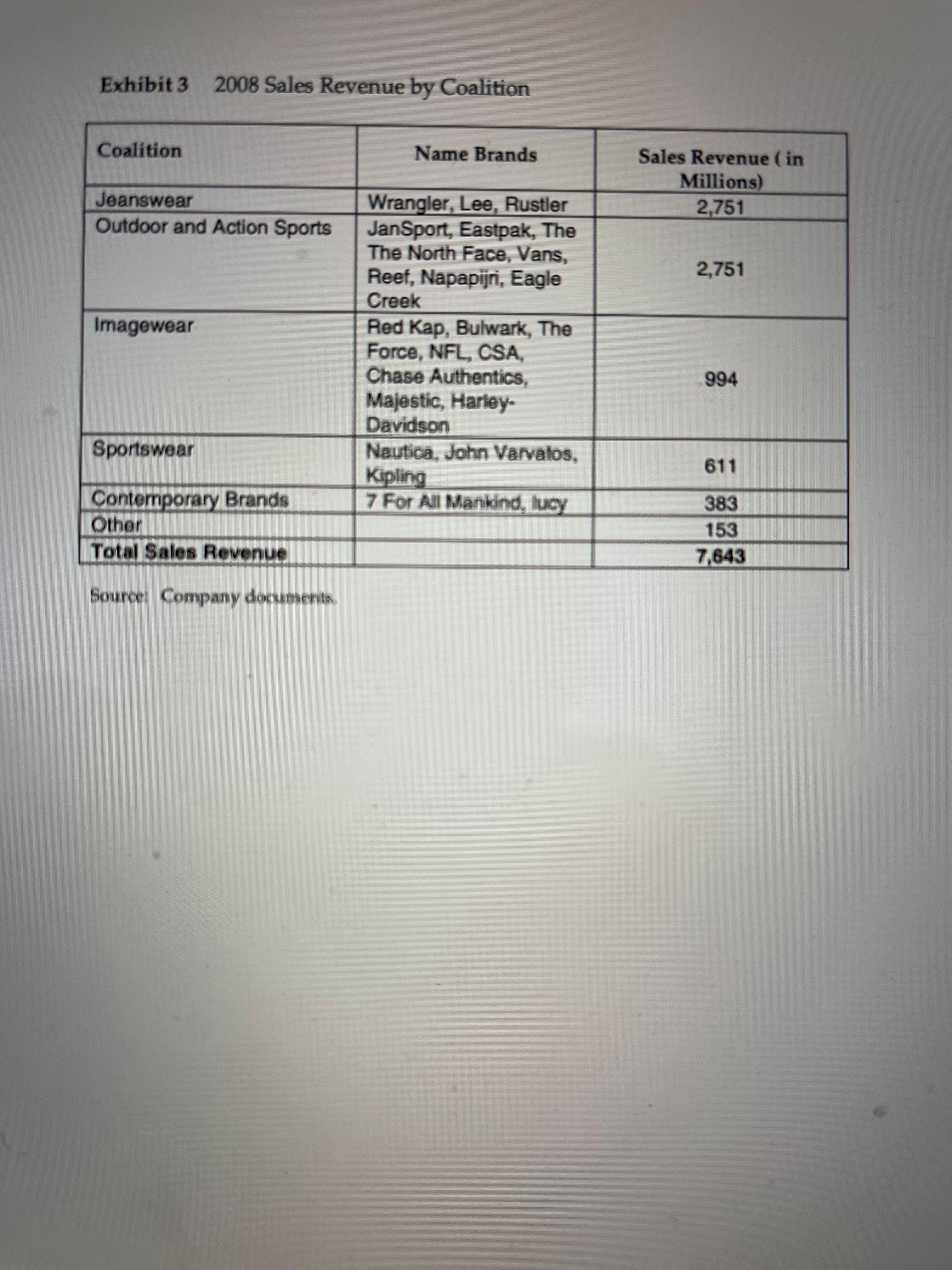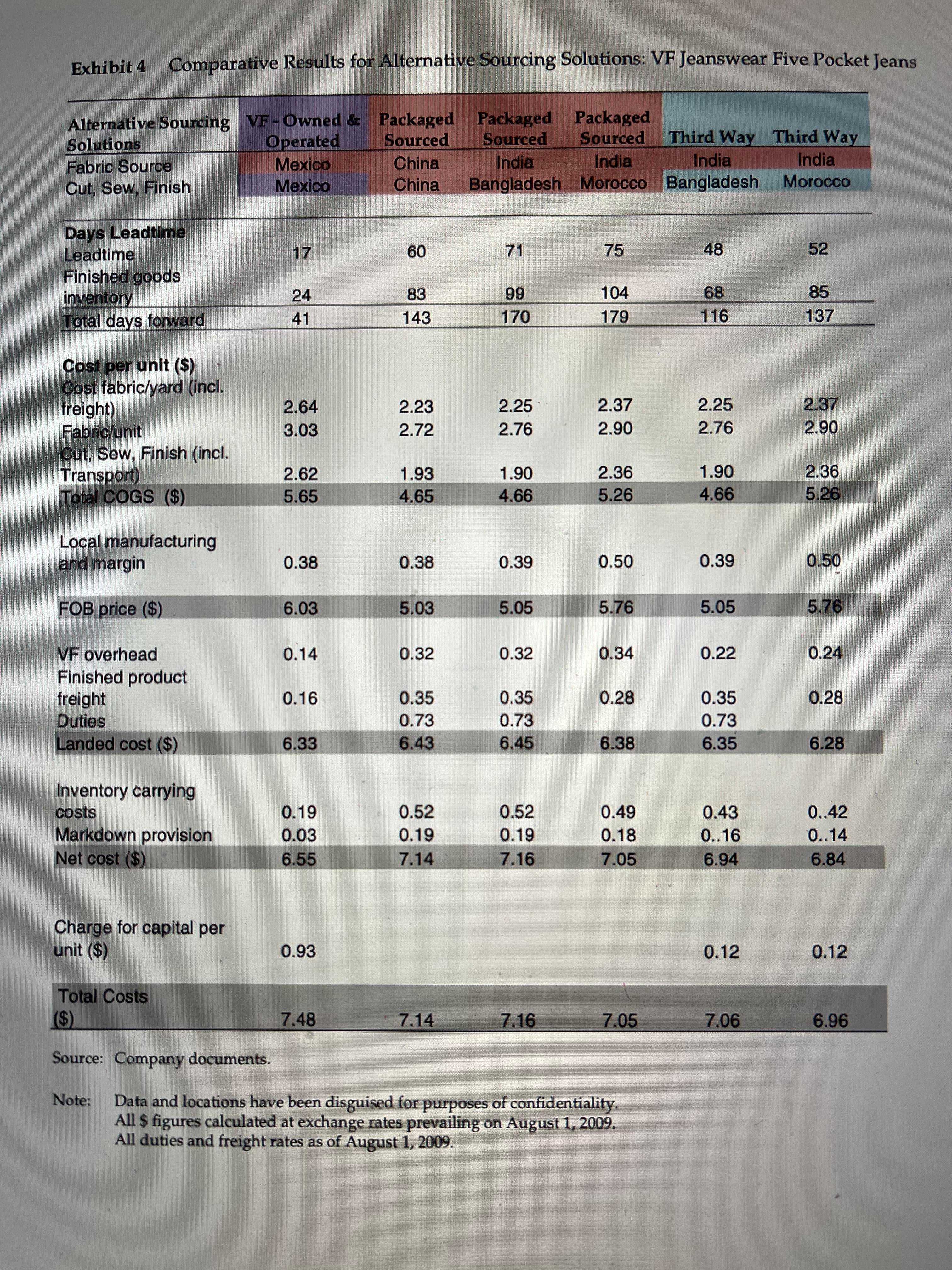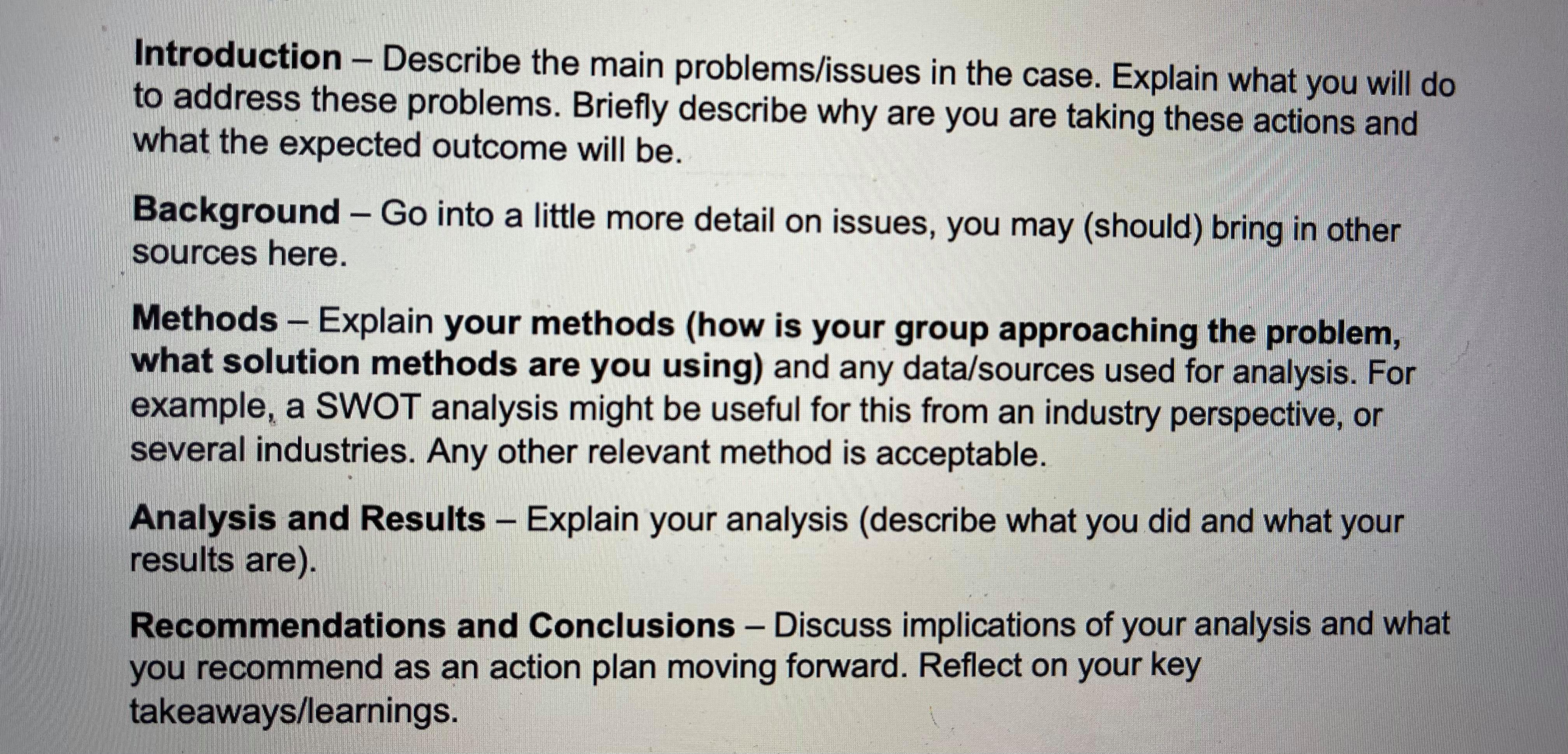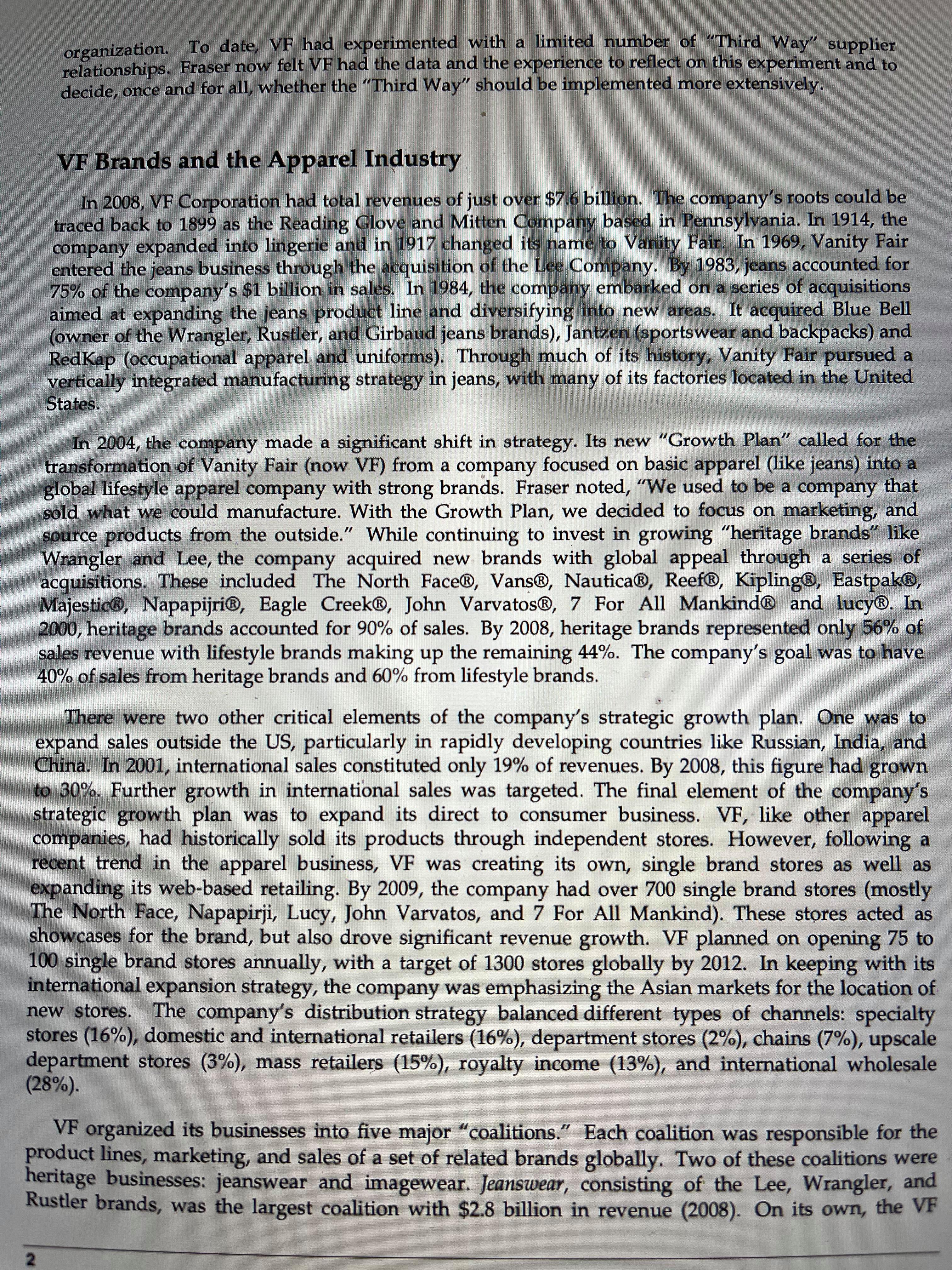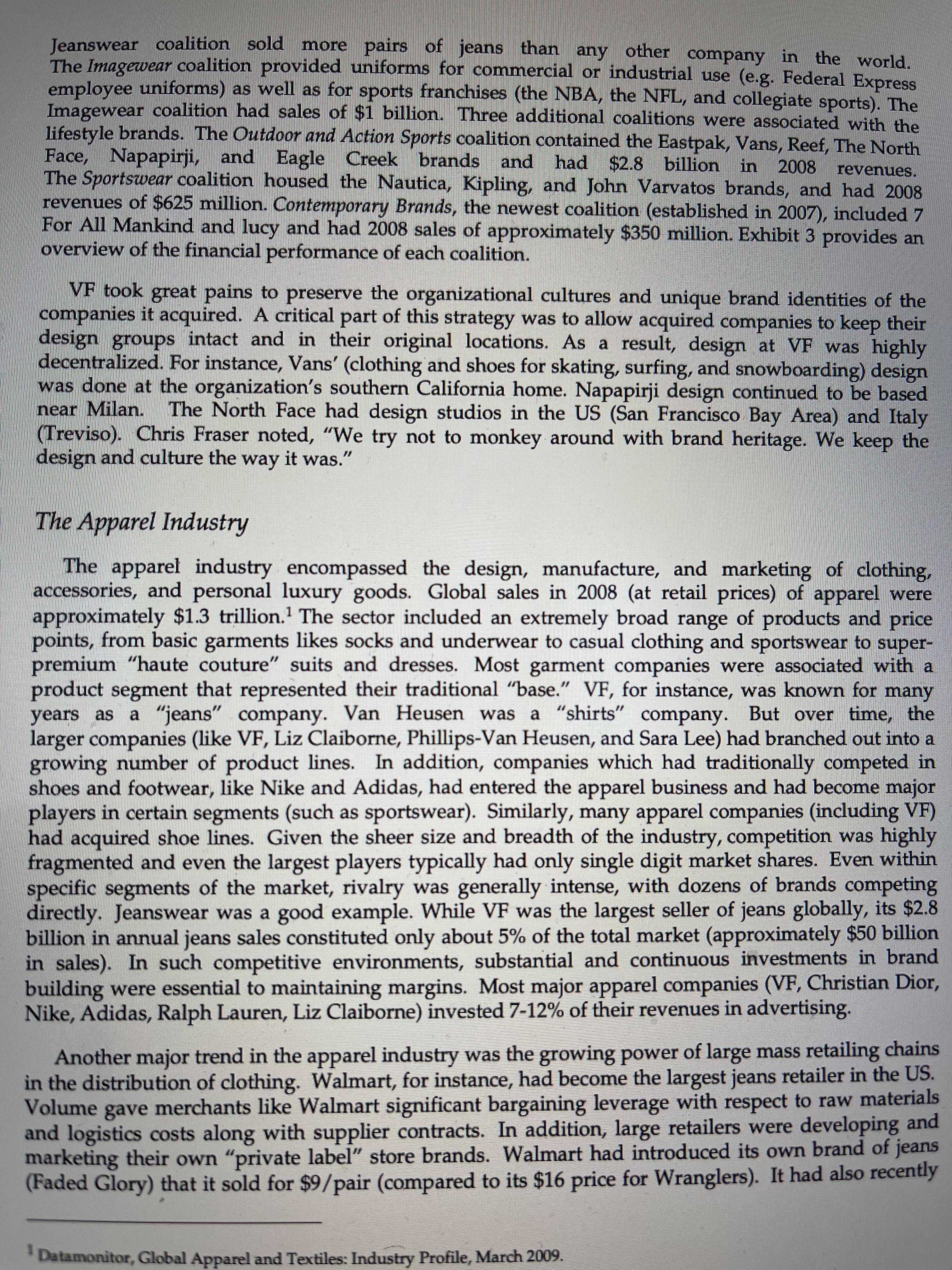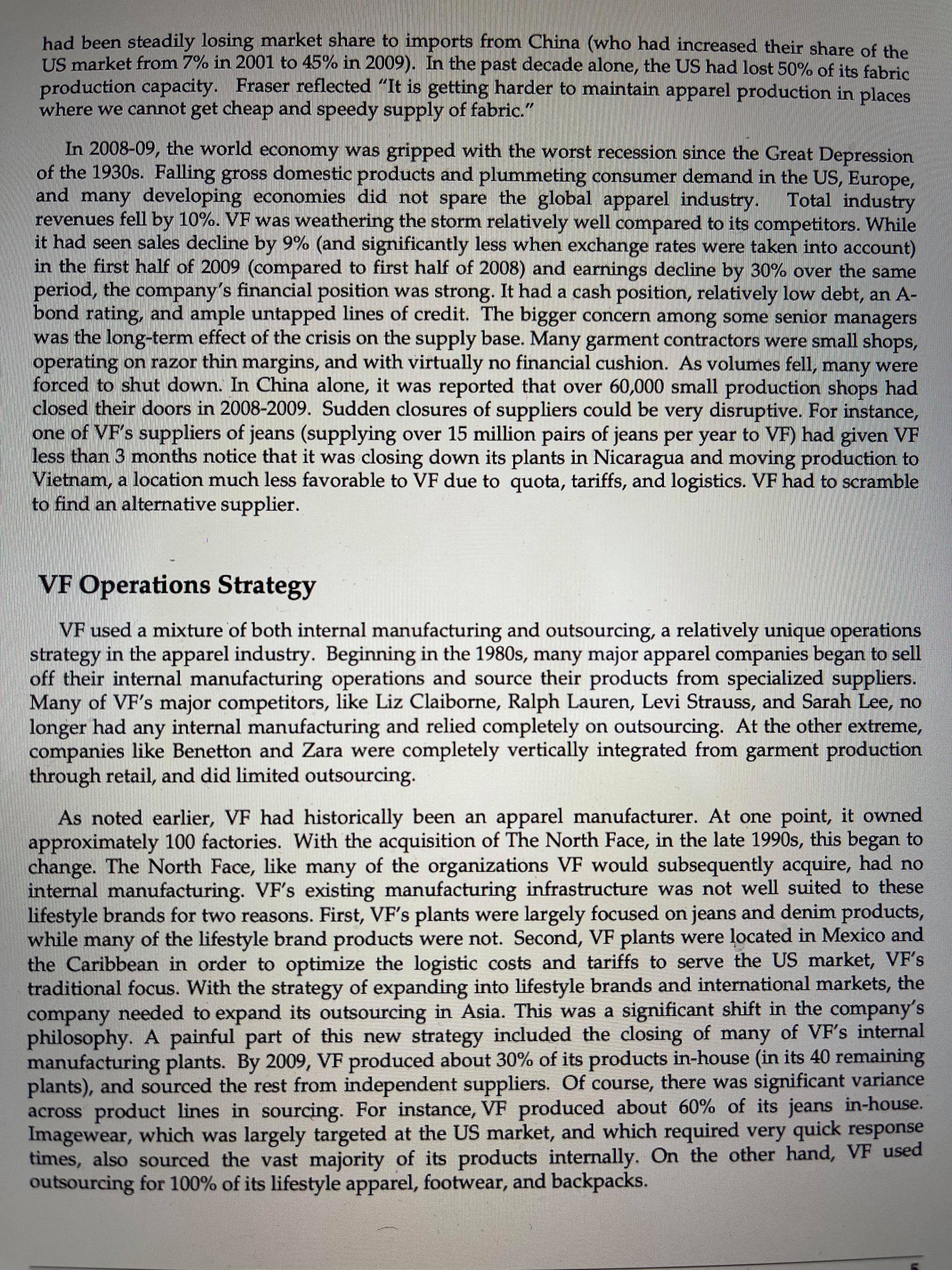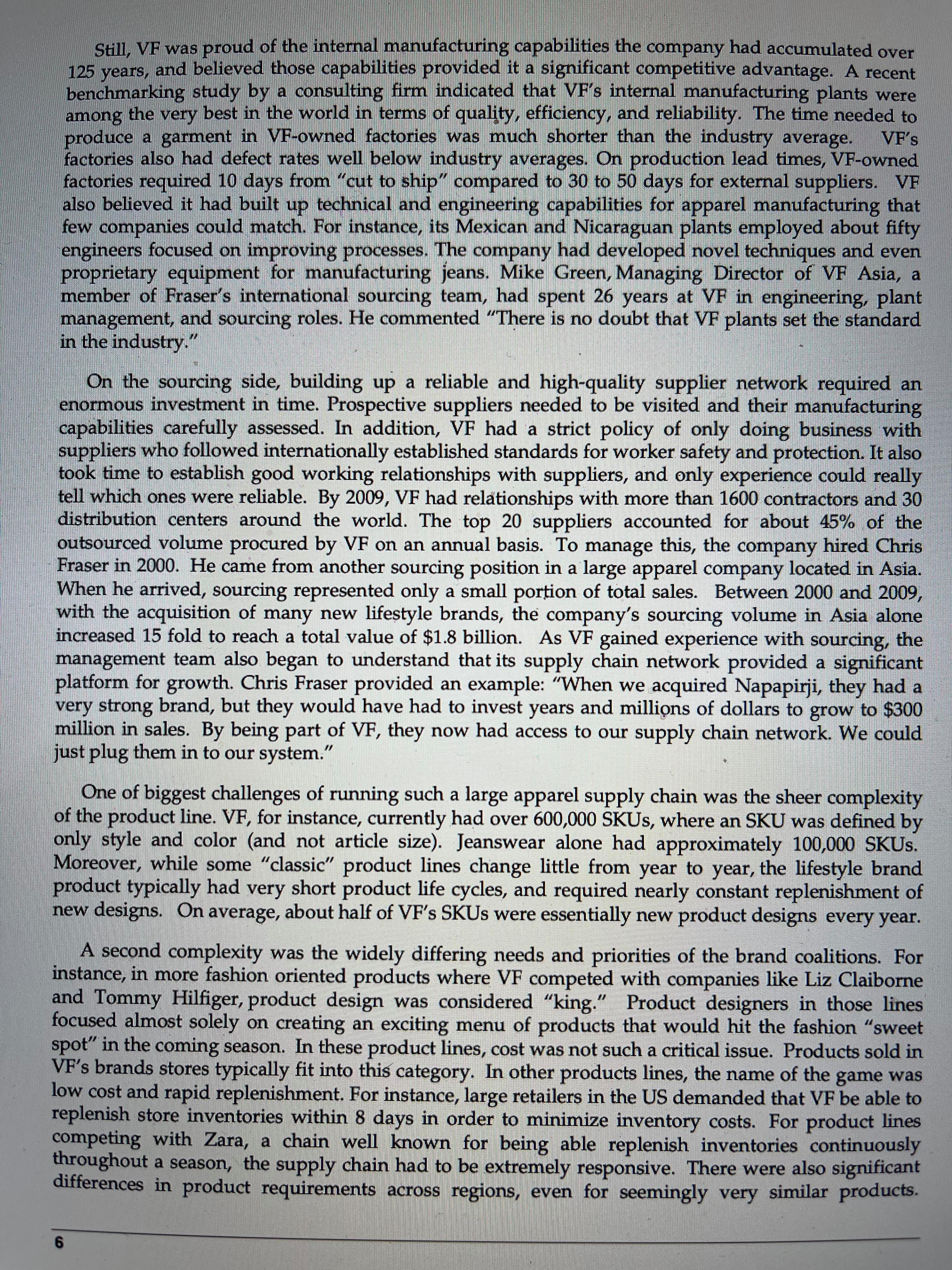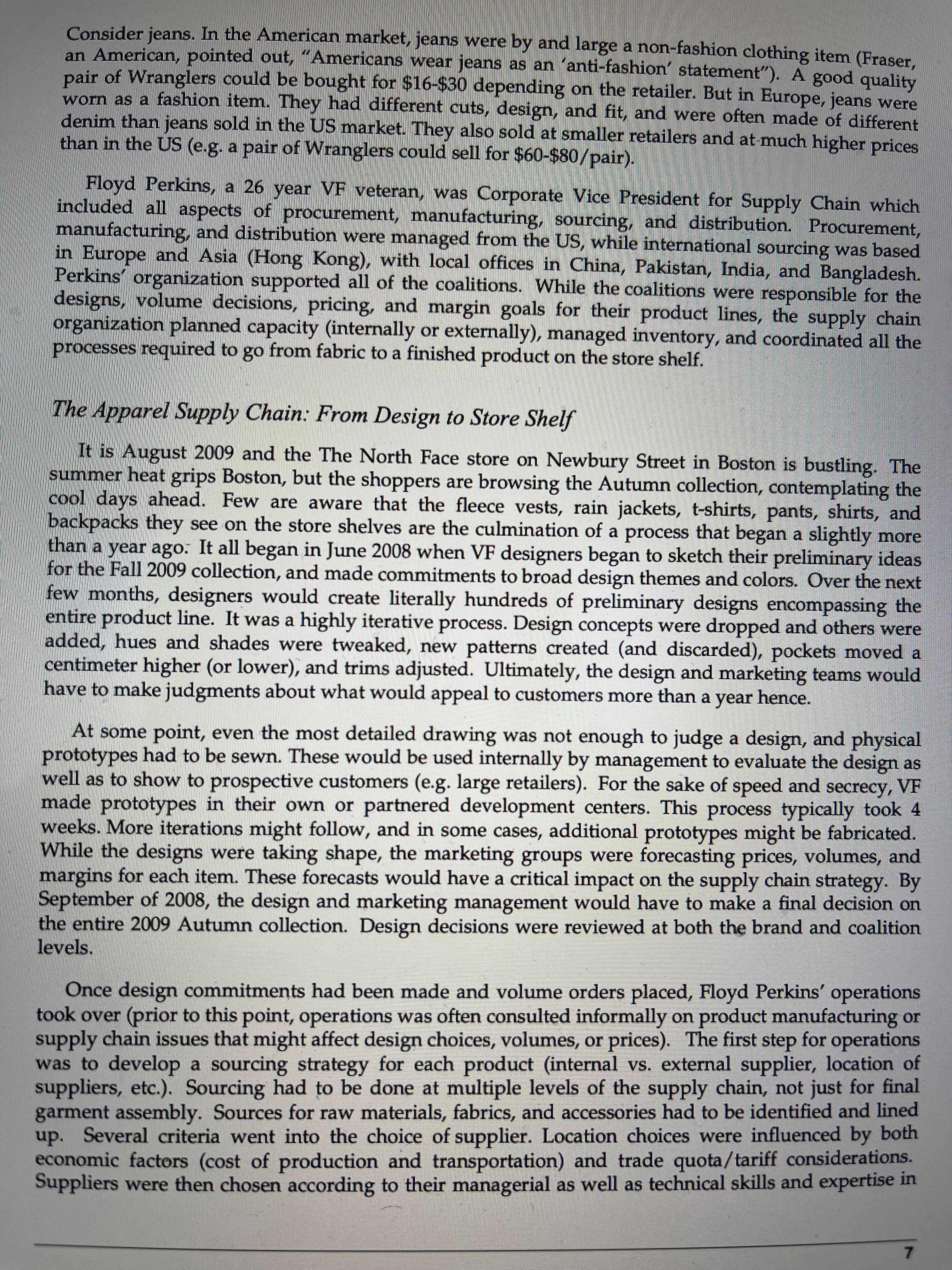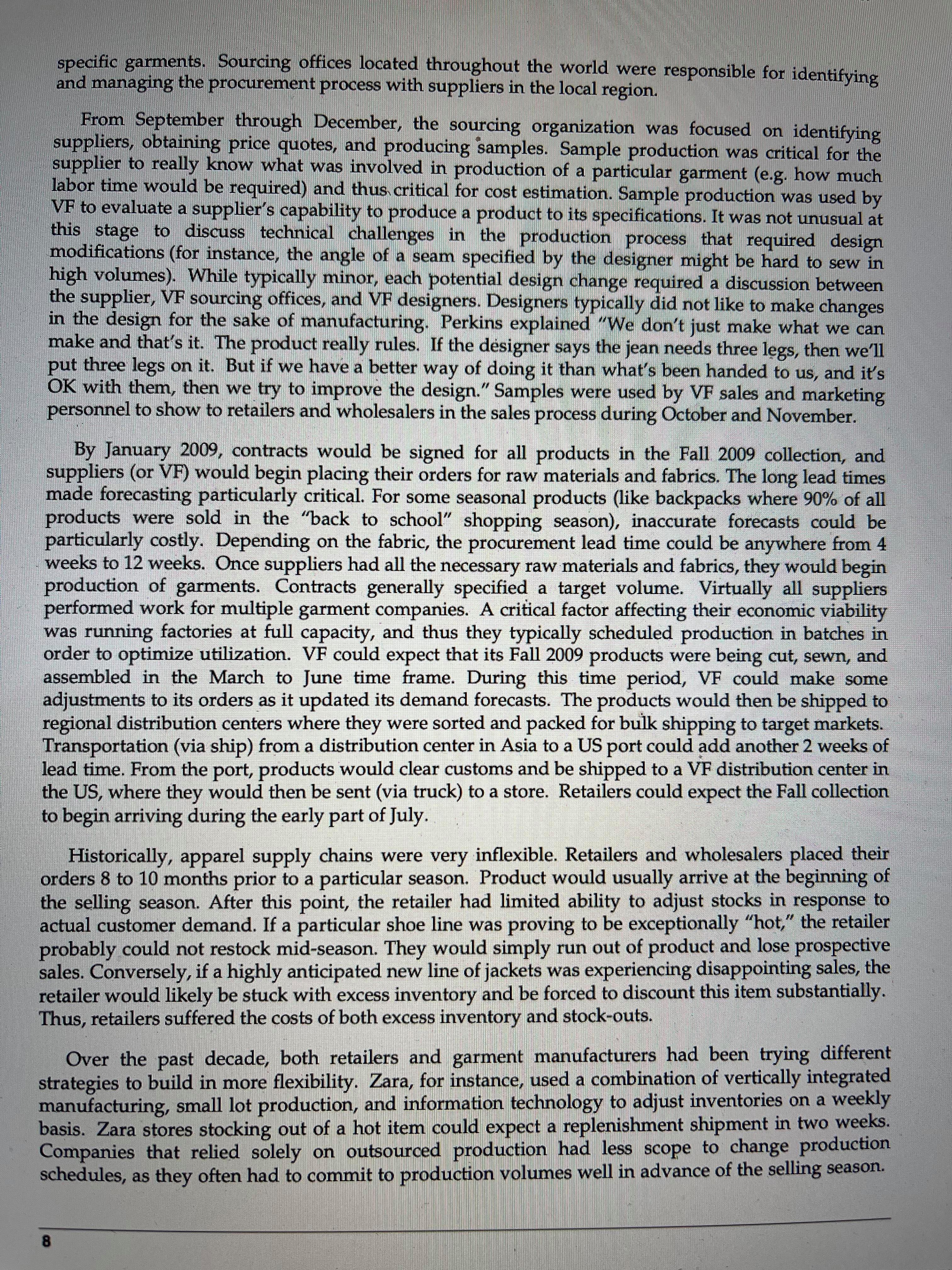Please provide detailed explanations for introduction, background, methods, analyis and results and recommendations and conclusions.
VF Brands: Global Supply Chain Strategy It was August 2009. Chris Fraser, President, Supply Chain International for VF Brands, was driving to his office just outside of Milan near Lake Como. On this sunny morning, the sparkling lake was a picture of tranquility, a striking contrast to the turbulence of the global apparel industry. In the shorter term, the economic crisis of 2008-09 was taking its toll on the entire business from the largest marketing companies to the smallest sub-contractors. But beyond the crisis, Fraser also foresaw long-term structural changes in the apparel business that could call for profound changes in the way VF, the world's largest publicly owned apparel company, managed its supply chain. Fraser noted "For the past few decades, supply chain strategy in apparel was focused on chasing low cost labor from one country to the next. Today, apparel is produced just about everywhere on Earth, and we have basically run out of new "low cost" places to source production - until, of course, penguins learn to sew. We have to start finding cost saving by how we manage our supply chain." For some time, Fraser had been advocating that VF shift its supply chain strategy. VF currently procured apparel both from its own plants and from a large network of suppliers. Like its competitors, VF's outsourcing strategy emphasized flexibility. Most suppliers in the garment industry received short-term contracts (typically a few months) to produce a specific garment in specific volumes. This strategy allowed garment marketers like VF to shift production among suppliers in different locations in order to optimize costs and to respond to changes in exchange rates, tariffs, and other cost factors. Many believed that this approach also provided strong incentives for suppliers to reduce costs in order to compete for future contracts. Fraser admitted that while this approach had worked well for many years, it had its drawbacks. The lack of coordination and trust between suppliers and apparel companies led to higher inventory and long lead times. In addition, Fraser felt that a company like VF, with its strong internal manufacturing capabilities, had expertise that it could share with suppliers in order to improve processes and reduce costs. He noted, "For products coming from our own manufacturing plants, we can move things through the supply chain in days instead of weeks. That allows us to respond very quickly to the market. That's the value of having our own plants. But from a capital point of view, it may not make sense for VF to continue to build its own plants. What I would like to see is that we create supplier relationships that work as closely with us as our internal plants do." Fraser called this approach the "Third Way" sourcing strategy because it represented an alternative to both in-house manufacturing and traditional sourcing. Fraser had first pitched the "Third Way" strategy five years ago, but encountered skepticism from some groups within theHowever, even in these cases, companies were trying to make the supply chain more responsive through better information exchange and through inventory management. VF had found that it could be highly responsive for jeans products manufactured in its own Mexican plants and destined for the US market. Chris Fraser explained, "For jeans sourced out of our factories in Mexico, we might cut fabric on a Monday. By Thursday, those jeans have been sewn and washed. Friday, they are packed and probably put on a truck heading to the US. By the next Monday, those jeans are in our US distribution center. By that Thursday, those jeans could be on a store shelf." "Third Way" Supply Chain Strategy In 2004, Chris Fraser felt that VF had created a highly efficient, globally diversified supply chain. There were a few basic types of sourcing relationships VF could establish with a supplier. One type was known as "cut and make" (CM) contracts. Under this approach, VF would strike separate contracts for suppliers at each stage of the production process (fabric, components, cutting, sewing washing, finishing, etc.). VF owned the inventory and suppliers were paid for the value added of their particular step. VF was also responsible for coordinating the flow of product from one supplier to the next. The advantage of this approach is that it allowed VF to maintain very tight control over costs at each stage. CM contracts were used mostly for heritage lines out of Central American and Caribbean suppliers and were managed in conjunction with internal manufacturing operations. A second approach was known as "package sourcing." Under package sourcing, a single supplier took responsibility for the entire process from raw materials to finished goods and shipping into the market. They were paid on a piece basis and are responsible for paying sub-contractors, raw material suppliers, and logistic costs. In this case, VF did not have ownership of the materials along the process. Full package sourcing was used mostly for the lifestyle brands throughout Asia, Europe, and Northern Africa. VF's coalitions were very pleased with the quality and reliability of the service they received from sourcing. In addition, VF had driven down costs by continually expanding the supplier base to ever lower cost locations. An aggressive focus on low cost sourcing had enabled VF to hit its overall corporate margin targets of 10-15%. It was at that point, however, that Fraser and Green began to think about next steps. Fraser believed that VF needed to shift its focus from finding even lower cost suppliers to doing a better job managing the supplier base it had. Fraser continued, "The supply chain could be made more efficient." Some of the inefficiency was due to lack of coordination and, more precisely, lack of trust between apparel companies and their suppliers. Historically, apparel companies and apparel suppliers showed little loyalty to one another. Contracts were short-term (typically one season). In their aggressive pursuit of low costs, apparel companies drove hard bargains on pricing and freely shifted production from one supplier to another. There were no guarantees in either direction. Every year, suppliers had to bid to get new business from a company and never guaranteed production capacity beyond a very short time horizon (covered by the contract). They also took on products for as many companies as possible (often competitors) in order to diversify their risks. In addition, suppliers never shared production information (capacity, inventory, costs) with apparel companies, for fear such information would be used against them in the bidding process. One manifestation of this lack of trust was excess inventory. Floyd Perkins provided an example: "When you own the factory there is no question of trust or commitment. Therefore we are able to operate on incredibly lean inventory levels. We have 3 days of work in process in our factories and maybe half a day's work ahead of the line. By contrast, our external suppliers often require that weprovide them 30 days of raw materials. Why? Because they don't trust us to come through. The inventory gives them security." The process was also very time consuming. Because there was no pre-set menu of prices for different design features (e.g. a pocket or a stone wash), the price of each garment had to be negotiated from scratch with each supplier. For instance, if VF wanted to add a pocket to a pair of pants, a supplier having a good year might ask for a 27 cent price increase while another who needed to fill capacity might only ask for only 21 cents. Fraser commented, "There is a lot of transaction time and gamesmanship in the negotiations with suppliers." Another problem with current sourcing was the lack of process improvement. Because garment contractors operated on razor thin margins, they invested little, if anything, in process technology. Engineering skills were not only hard to come by, they were not highly valued or sought after by contractors. In fact, because they were generally born in very low wage environments, productivity improvements were never a high priority. If problems arose, the answer was generally to add more workers or overtime. Fraser and Green believed that VF's technical capabilities represented a "trump card" that no other competitor had. Floyd Perkins agreed: You go to places today to source where labor in incredibly cheap. That is not going to be the differentiator any more. We need to look for other benefits like speed to market, material utilization, lower inventories, less work in process, and lower cost to quality. Competitive advantage no longer comes from reducing the amount of needle time that goes into the garment, but from managing the whole supply chain. And that is where we might be able to beat another brand that does not know how to manage the supply chain. Fraser explained that the biggest barrier to growing internal manufacturing was VF's desire to minimize investments in fixed plant and equipment. He noted "One could argue that we should be buying more factories and leveraging our expertise in production that way. But even if it only costs $10 to $15 million to build a good factory, such a strategy would not be consistent with VF's corporate capital deployment strategy. That money is better invested in our brands and our retail operations." Was there a way for VF to leverage its internal technical expertise and gain a greater degree of control over the supply chain without actually owning suppliers? Fraser believed that if VF could put its "hard technical skills" into the supply chain, it would have an advantage over apparel companies that lacked internal manufacturing competences. Floyd Perkins commented: We have an abundance of engineering skills dedicated to our own factories. If we could take our engineers in Mexico who are shaving pennies off the cost of garments that have been engineered for 100 years now, and transfer them to places where 60% of our products are made now, that could have a big impact. We had one recent example that just blew me away. We sent this one young engineer from Mexico to one of our Asian suppliers. He came back and said they don't load the containers as efficiently as we do in Mexico. So we had him develop some guidelines for them for container utilization. The result was a $2 million annual savings. Fraser thought he had a strategy for making the supply chain much more efficient. He called it "Third Way" sourcing. "Third Way" sourcing was designed to be a half-way point between full integration and traditional outsourcing. The idea was to create a true partnership between VF and the supplier. While the details might differ across specific suppliers, Fraser saw the key elements of "Third Way" sourcing relationship as follows: 10VF would strike an agreement with a supplier for a specific product line (e.g. backpacks) and commit to a volume forecast over a number of years (instead of one season). The supplier would not produce the same category of product (e.g. backpacks) for competitors, and would agree not to do so in the future. The supplier would set up production lines dedicated to VF's products, investing in the building, machinery, equipment, labor supervision, logistics services, and administrative infrastructure to manage the operations. VF and the supplier would develop production schedules jointly to meet each partner's needs. Information on order forecasts and production capacity were to be shared between the partners. VF and the supplier would work together on process improvements. VF would make available (without charge) its engineering resources to improve production processes. A portion of the savings realized by these improvements would be passed through to VF. The supplier would own the factory and the equipment and be responsible for managing the work force. VF would make certain investments in specialized equipment and capital when necessary. VF would utilize its purchasing capacity to help the suppliers procure fabric and other raw materials at discounted prices. VF would agree to buy back any unused fabric or raw material from the supplier. The supplier would be paid on a cost plus basis with a margin to meet its ROA requirements. Fraser recalled his first presentation of the idea back in 2005 to a group of senior managers. Concerns about the idea came from all directions. Some within the marketing organization were worried about the loss of flexibility the new approach might entail. Fraser commented "Sourcing was viewed as a big 'candy shop' where you could get just about anything you wanted. The marketing folks were concerned that if we went away from our sourcing strategy, we could lose flexibility to serve them." The manufacturing organization, on the other hand, was frustrated by the continued closing of internal plants despite their strong performance. At another level, they were also not happy about handing over their engineering resources to be managed by the sourcing team. But the real concern of internal manufacturing revolved around the sharing of its proprietary expertise with outside suppliers. They raised serious concerns about the leakage of VF's hard earned process expertise which could eventually be used to produce for competitors. Fraser and Green, however, did not share these concerns. They had no plans to transfer VF's proprietary equipment to "Third Way" partners. Rather, their focus was on using the skill sets of internal manufacturing to improve supplier performance in terms of cost, quality, and speed. As Green explained, "There is a philosophy of how we train our engineers and the training programs from a junior engineer all the way through a division engineer. It's about what we teach them and how we teach them, and copying that is not as easy as just flipping on a light switch or reading some manual." Despite the objections of these internal groups, Fraser and Green persisted. By 2009, they had formed five "Third Way" partnerships. One was for the production of backpacks in Thailand. A second was for jeans production in Bangladesh. A third was for jeans production in Morocco. A fourth was for jeans production in China for the Chinese market. The fifth was for outerwear production in China. One of the interesting things Fraser and Green learned was that it was much easier to convince new suppliers than existing suppliers to sign up for a "Third Way" partnership. 11When they broached the concept to some of VF's best existing suppliers, they got a cold reception. Green recalled, "It's hard to convince suppliers this is a good idea for them. The experienced ones can be pretty set in their ways about how they run their plants and their operations. They were really not that interested in us coming in there and changing their processes. We also had a hard time to get partners to share information about costs and processes within their factories." Another challenge of implementing "Third Way" partnerships was staffing. In fact, Green noted that he found it difficult to move forward on the plans more quickly. He either had to find experienced engineers from VF's own factories that would be willing to move across the world, or hire locals and then send them through a rigorous training program within VF's manufacturing division. Tom Green provided an example from the Bangladesh partnership: "We hired some top graduates out of a Bangladesh university. We then put them into a mentoring program with two of our engineers with 10 and 20 years experience that we brought over to Hong Kong to work with these guys. The next phase for us will be to create a routine for this training process. Tom and Floyd are constantly saying move faster, but you can only do so much so fast." The experience to date, while limited, gave VF management a glimpse into the potential cost benefits of "Third Way" sourcing. Exhibit 4 provides an overview of the lead times, inventory, and costs of producing a standard "five pocket jean" in different locations and under different sourcing arrangements (internal manufacturing, traditional packaged source, and "Third Way" partnerships). Not all partnerships ended as planned, as illustrated by VF's experience with its Moroccan partner. Despite VF's volume guarantees and technical help to improve operations, the Moroccan jeans plant was not able to dig itself out of debt (largely due to drastic declines in its business with other companies). By early 2009, its financial position had deteriorated to the point that the owner considered halting operations. To protect its supply base, and in the face of a highly favorable price due to exchange rates, VF decided to buy-out the partner, and the Moroccan plant is now a wholly owned VF operation. VF transferred a manager from one of its Mexican plants to Morocco to run the operations. Floyd Perkins felt the real benefits of the "Third Way" strategy had not even been seen yet, because they lay in the design process. He commented "If you think about speed to market, which is always one of the challenges of the supply chain, about two-thirds of the time is spent in the product development process. Only one-third is the time it takes to go from the order to the delivery to the store shelf. I think we also need to focus on those first stages to see how we can shorten lead times." Fraser felt that the "Third Way" strategy had reached a critical cross-road. VF's ambitious international expansion goals, particularly for Asia, meant that they would need to bring on significant new capacity over the next several years. They could do that by expanding "Third Way" sourcing, expanding internal manufacturing, or by simply doing more traditional sourcing. The decision, Fraser felt, would have a profound impact on VF's competitive capabilities for years to come.Exhibit 1 VF Consolidated Statements of Income In thousands, except per share amounts 2008 2007 2006 Net Sales $ 7,561,621 $ 7,140,811 $ 6,138,087 Royalty Income 80,979 78,548 77,707 Total Revenue 7,642,600 7,219,359 6,215,794 Costs and Operating Expenses Cost of goods sold 4,283,680 4,080,022 3,515,624 Marketing, administrative and general expenses 2,419,925 2,173,896 1,874,026 6,703,605 6,253,918 5,389,650 Operating Income 938,995 965,441 826,144 Other Income (Expense) Interest Income 6, 115 9,310 5,994 Interest Expense (94,050) (72,122) (57,259) Miscellaneous, net (3,103) 2,941 2,359 (91,038) (59,871) (48,906) Income from Continuing Operations Before Income Taxes 847,957 905,570 777,238 Income Taxes 245,209 292,324 242,187 Income from Continuing Operations 602,748 613,246 535,051 Discontinued Operations (21,625) (1,535) Net Income 602,748 591,621 533,516 Earnings Per Common Share- Basic Income from continuing operations $ 5.52 $ 5.55 $ 4.83 Discontinued Operations (0.20) (0.01) Net Income 5.52 5.36 4.82 Earnings Per Common Share- Diluted Income from continuing operations $ 5.42 $ 5.41 $ 4.73 Discontinued operations (0.19) (0.01) Net Income 5.42 5.22 4.72 Cash Dividends Per Common Share $ 2.33 $ 2.23 $ 1.94 Source: Company documents.Exhibit 2 Consolidated Balance Sheets In thousands 2008 2007 Assets Current Assets Cash and equivalents $ 381,844 321,863 Accounts receivable, net 851,282 970,951 Inventories 1, 151,895 1,138,752 Deferred income taxes 96,339 104,489 Other current assets 171,650 109,074 Total current assets 2,653,010 2,645,129 Property, Plant and Equipment 1,557,634 1,529,015 Less accumulated depreciation 914,907 877,157 642,727 651,858 Intangible Assets 1,366,222 1,435,269 Goodwill 1,313,798 1,278,163 Other Assets 458, 111 436,266 $ 6,433,868 $ 6,446,685 Liabilities and Stockholders' Equity Current Liabilities Short-term borrowings $ 53,580 $ 131,545 Current portion of long-term debt 3,322 3,803 Accounts payable 435,381 509,879 Accrued liabilities 519,899 489,160 Total current liabilities 1,012,182 1, 134,387 Long Term Debt 1,141,546 1,144,810 Other Liabilities 724,248 590,659 Commitments and Contingencies Common Stockholders' Equity Common Stock 109,848 109,798 Additional paid-in capital 1,749,464 1,619,320 Accumulated other comprehensive income (loss) (276,294) 61,495 Retained earnings 1,972,874 1,786,216 Total common stockholders' equity 3,555,892 3,576,829 $ 6,433,868 $ 6,446,685 Source: Company documents.Exhibit 3 2008 Sales Revenue by Coalition Coalition Name Brands Sales Revenue ( in Millions Jeanswear Wrangler, Lee, Rustler 2,751 Outdoor and Action Sports JanSport, Eastpak, The The North Face, Vans, Reef, Napapijri, Eagle 2,751 Creek Imagewear Red Kap, Bulwark, The Force, NFL, CSA, Chase Authentics 994 Majestic, Harley- Davidson Sportswear Nautica, John Varvatos, 611 Kipling Contemporary Brands 7 For All Mankind, luc 383 Other 153 Total Sales Revenue 7.643 Source: Company documentsExhibit 4 Comparative Results for Alternative Sourcing Solutions: VF Jeanswear Five Pocket Jeans Alternative Sourcing VF - Owned & Packaged Packaged Packaged Solutions Operated Sourced Sourced Sourced Third Way Third Way Fabric Source Mexico China India India India India Cut, Sew, Finish Mexico China Bangladesh Morocco Bangladesh Morocco Days Leadtime Leadtime 17 60 71 75 48 52 Finished goods inventory 24 83 99 104 68 85 Total days forward 41 143 170 179 116 137 Cost per unit ($) Cost fabric/yard (incl. freight) 2.64 2.23 2.25 2.37 2.25 2.37 Fabric/unit 3.03 2.72 2.76 2.90 2.76 2.90 Out, Sew, Finish (incl. Transport) 2.62 1.93 1.90 2.36 1.90 2.36 Total COGS ($) 5.65 4.65 4.66 5.26 4.66 5.26 Local manufacturing and margin 0.38 0.38 0.39 0.50 0.39 0.50 FOB price ($) 6.03 5.03 5.05 5.76 5.05 5.76 VF overhead 0. 14 0.32 0.32 0.34 0.22 0.24 Finished product freight 0.16 0.35 0.35 0.28 0.35 0.28 Duties 0.73 0.73 0.73 Landed cost ($) 6.33 6.43 6.45 6.38 6.35 6.28 Inventory carrying costs 0.19 0.52 0.52 0.49 0.43 0..42 Markdown provision 0.03 0.19 0.19 0.18 0.. 16 0.. 14 Net cost ($) 6.55 7.14 7.16 7.05 6.94 6.84 Charge for capital per unit ($) 0.93 0.12 0.12 Total Costs ($) 7.48 7.14 7.16 7.05 7.06 6.96 Source: Company documents. Note: Data and locations have been disguised for purposes of confidentiality. All $ figures calculated at exchange rates prevailing on August 1, 2009. All duties and freight rates as of August 1, 2009.Introduction - Describe the main problems/issues in the case. Explain what you will do to address these problems. Briefly describe why are you are taking these actions and what the expected outcome will be. Background - Go into a little more detail on issues, you may (should) bring in other sources here. Methods - Explain your methods (how is your group approaching the problem, what solution methods are you using) and any data/sources used for analysis. For example, a SWOT analysis might be useful for this from an industry perspective, or several industries. Any other relevant method is acceptable. Analysis and Results - Explain your analysis (describe what you did and what your results are). Recommendations and Conclusions - Discuss implications of your analysis and what you recommend as an action plan moving forward. Reflect on your key takeaways/learnings.organization. To date, VF had experimented with a limited number of "Third Way" supplier relationships. Fraser now felt VF had the data and the experience to reflect on this experiment and to decide, once and for all, whether the "Third Way" should be implemented more extensively. VF Brands and the Apparel Industry In 2008, VF Corporation had total revenues of just over $7.6 billion. The company's roots could be traced back to 1899 as the Reading Glove and Mitten Company based in Pennsylvania. In 1914, the company expanded into lingerie and in 1917 changed its name to Vanity Fair. In 1969, Vanity Fair entered the jeans business through the acquisition of the Lee Company. By 1983, jeans accounted for 75% of the company's $1 billion in sales. In 1984, the company embarked on a series of acquisitions aimed at expanding the jeans product line and diversifying into new areas. It acquired Blue Bell (owner of the Wrangler, Rustler, and Girbaud jeans brands), Jantzen (sportswear and backpacks) and RedKap (occupational apparel and uniforms). Through much of its history, Vanity Fair pursued a vertically integrated manufacturing strategy in jeans, with many of its factories located in the United States . In 2004, the company made a significant shift in strategy. Its new "Growth Plan" called for the transformation of Vanity Fair (now VF) from a company focused on basic apparel (like jeans) into a global lifestyle apparel company with strong brands. Fraser noted, "We used to be a company that sold what we could manufacture. With the Growth Plan, we decided to focus on marketing, and source products from the outside." While continuing to invest in growing "heritage brands" like Wrangler and Lee, the company acquired new brands with global appeal through a series of acquisitions. These included The North Face@, Vans@, Nautica@, Reef@, Kipling@, Eastpak@, Majestic@, Napapijri@, Eagle Creek@, John Varvatos@, 7 For All Mankind@ and lucy@. In 2000, heritage brands accounted for 90% of sales. By 2008, heritage brands represented only 56% of sales revenue with lifestyle brands making up the remaining 44%. The company's goal was to have 40% of sales from heritage brands and 60% from lifestyle brands. There were two other critical elements of the company's strategic growth plan. One was to expand sales outside the US, particularly in rapidly developing countries like Russian, India, and China. In 2001, international sales constituted only 19% of revenues. By 2008, this figure had grown to 30%. Further growth in international sales was targeted. The final element of the company's strategic growth plan was to expand its direct to consumer business. VF, like other apparel companies, had historically sold its products through independent stores. However, following a recent trend in the apparel business, VF was creating its own, single brand stores as well as expanding its web-based retailing. By 2009, the company had over 700 single brand stores (mostly The North Face, Napapirji, Lucy, John Varvatos, and 7 For All Mankind). These stores acted as showcases for the brand, but also drove significant revenue growth. VF planned on opening 75 to 100 single brand stores annually, with a target of 1300 stores globally by 2012. In keeping with its international expansion strategy, the company was emphasizing the Asian markets for the location of new stores. The company's distribution strategy balanced different types of channels: specialty stores (16%), domestic and international retailers (16%), department stores (2%), chains (7%), upscale department stores (3%), mass retailers (15%), royalty income (13%), and international wholesale (28%). VF organized its businesses into five major "coalitions." Each coalition was responsible for the product lines, marketing, and sales of a set of related brands globally. Two of these coalitions were heritage businesses: jeanswear and imagewear. Jeanswear, consisting of the Lee, Wrangler, and Rustler brands, was the largest coalition with $2.8 billion in revenue (2008). On its own, the VFJeanswear coalition sold more pairs of jeans than any other company in the world The Imagewear coalition provided uniforms for commercial or industrial use (e.g. Federal Express employee uniforms) as well as for sports franchises (the NBA, the NFL, and collegiate sports). The Imagewear coalition had sales of $1 billion. Three additional coalitions were associated with the lifestyle brands. The Outdoor and Action Sports coalition contained the Eastpak, Vans, Reef, The North Face, Napapirji, and Eagle Creek brands and had $2.8 billion in 2008 revenues. The Sportswear coalition housed the Nautica, Kipling, and John Varvatos brands, and had 2008 revenues of $625 million. Contemporary Brands, the newest coalition (established in 2007), included 7 For All Mankind and lucy and had 2008 sales of approximately $350 million. Exhibit 3 provides an overview of the financial performance of each coalition. VF took great pains to preserve the organizational cultures and unique brand identities of the companies it acquired. A critical part of this strategy was to allow acquired companies to keep their design groups intact and in their original locations. As a result, design at VF was highly decentralized. For instance, Vans' (clothing and shoes for skating, surfing, and snowboarding) design was done at the organization's southern California home. Napapirji design continued to be based near Milan. The North Face had design studios in the US (San Francisco Bay Area) and Italy (Treviso). Chris Fraser noted, "We try not to monkey around with brand heritage. We keep the design and culture the way it was." The Apparel Industry The apparel industry encompassed the design, manufacture, and marketing of clothing, accessories, and personal luxury goods. Global sales in 2008 (at retail prices) of apparel were approximately $1.3 trillion.' The sector included an extremely broad range of products and price points, from basic garments likes socks and underwear to casual clothing and sportswear to super- premium "haute couture" suits and dresses. Most garment companies were associated with a product segment that represented their traditional "base." VF, for instance, was known for many years as a "jeans" company. Van Heusen was a "shirts" company. But over time, the larger companies (like VF, Liz Claiborne, Phillips-Van Heusen, and Sara Lee) had branched out into a growing number of product lines. In addition, companies which had traditionally competed in shoes and footwear, like Nike and Adidas, had entered the apparel business and had become major players in certain segments (such as sportswear). Similarly, many apparel companies (including VF) had acquired shoe lines. Given the sheer size and breadth of the industry, competition was highly fragmented and even the largest players typically had only single digit market shares. Even within specific segments of the market, rivalry was generally intense, with dozens of brands competing directly. Jeanswear was a good example. While VF was the largest seller of jeans globally, its $2.8 billion in annual jeans sales constituted only about 5% of the total market (approximately $50 billion in sales). In such competitive environments, substantial and continuous investments in brand building were essential to maintaining margins. Most major apparel companies (VF, Christian Dior, Nike, Adidas, Ralph Lauren, Liz Claiborne) invested 7-12% of their revenues in advertising. Another major trend in the apparel industry was the growing power of large mass retailing chains in the distribution of clothing. Walmart, for instance, had become the largest jeans retailer in the US. Volume gave merchants like Walmart significant bargaining leverage with respect to raw materials and logistics costs along with supplier contracts. In addition, large retailers were developing and marketing their own "private label" store brands. Walmart had introduced its own brand of jeans (Faded Glory) that it sold for $9/pair (compared to its $16 price for Wranglers). It had also recently Datamonitor, Global Apparel and Textiles: Industry Profile, March 2009.launched a line of jeans made exclusively for them by Jones Apparel, called L.e.i., specifically targeted at teenage girls. Most apparel companies typically concentrated on design and marketing, and generally performed little or none of their own production, much of which had been transferred to low cost countries around the world. In fact, while 49% of retail apparel sold in the United States was made domestically in 1992, by 1999 this figure had dropped to only 12%. Extensive outsourcing had become the norm for a number of reasons. The production of garments was generally a labor intensive process offering few scale advantages. Barriers to entry into production were relatively low. As a result, there were hundreds of thousands of small contract garment manufacturers scattered around the globe. Moreover, the skills required to produce garments (cutting and stitching fabric) were relatively generic. This enabled garment companies to source production of their design on highly competitive terms. In addition, garment production was subject to complex and ever changing tariffs and quotas. Bilateral trade deals generally dictated from which countries garments were ported. Further complicating matters was the fact that there were separately negotiated duties and quotas for fabrics and textiles. These could dramatically change the economics of production in one country versus another. Historically, garment companies "chased quota"; that is, they sought out low-cost producers from countries that had not yet hit their quotas for importing into a certain country. While tariffs and quotas on textiles and garments were being reduced under the auspices of the 2005 World Trade Organization accord, it was still far from an open market. The largest apparel companies that sold products in all major global markets thus found it advantageous and less risky to have an extremely broad geographic base of suppliers so that they could shift production in response to changes in tariffs and quotas. Fraser noted that while tariffs and quotas had come down over the past two decades, those barriers had left the industry with a highly fragmented and often illogical supply chain. For instance, for a sweater sold in the US market, the raw wool might be sourced in Australia. That wool would then be sent to China for spinning into yarn. The yarn might then be sent back to Australia for dying and knitting into fabric panels. Those panels would then be sent to China again where the sweater would be assembled. From there, it would be shipped to the US. Fraser noted, "Ideally, we are trying to line up all the vertical steps in a region or a country. Thailand, for instance, is an ideal place to assemble backpacks. We can shorten lead times significantly if we can procure fabric, components, and other raw materials there as well. If we do a similar thing with other products in China where our stores are located, and we can move the goods right out of the packing area directly into the stores, all the better!" As supply chains globalized, the challenges of finding suppliers, managing sourcing relationships, and coordinating product flows had been steadily increasing. In the 1990s, many American and European based apparel companies found that they lacked both the skills and relationships for effective sourcing in Asia. To fill this need, some Asian manufacturers shifted their business models to provide fully-integrated supply chain services to apparel companies. Hong Kong based Li & Fung was a good example of this breed of supply chain service company. Founded in 1906 as a trading company, Li & Fung now managed the supply chains and sourcing for many of the world's largest brands (in apparel, footwear, and other consumer products). In essence, Li & Fung acted as an intermediary between the brand companies and a network of sub-contractors scattered around the globe. In recent years, Li & Fung, like other supply chain intermediaries, had begun to integrate forward into their own brands and retail chains. Over the past ten years, the upstream segment of the supply chain-garment production-had been undergoing dramatic changes. Since 2001 (the first year garment quotas were eliminated), fabric producers in the CAFTA region (which included Central America, the US, and Dominican Republic)had been steadily losing market share to imports from China (who had increased their share of the US market from 7% in 2001 to 45% in 2009). In the past decade alone, the US had lost 50% of its fabric production capacity. Fraser reflected "It is getting harder to maintain apparel production in places where we cannot get cheap and speedy supply of fabric." In 2008-09, the world economy was gripped with the worst recession since the Great Depression of the 1930s. Falling gross domestic products and plummeting consumer demand in the US, Europe, and many developing economies did not spare the global apparel industry. Total industry revenues fell by 10%. VF was weathering the storm relatively well compared to its competitors. While it had seen sales decline by 9% (and significantly less when exchange rates were taken into account) in the first half of 2009 (compared to first half of 2008) and earnings decline by 30% over the same period, the company's financial position was strong. It had a cash position, relatively low debt, an A- bond rating, and ample untapped lines of credit. The bigger concern among some senior managers was the long-term effect of the crisis on the supply base. Many garment contractors were small shops, operating on razor thin margins, and with virtually no financial cushion. As volumes fell, many were forced to shut down. In China alone, it was reported that over 60,000 small production shops had closed their doors in 2008-2009. Sudden closures of suppliers could be very disruptive. For instance, one of VF's suppliers of jeans (supplying over 15 million pairs of jeans per year to VF) had given VF less than 3 months notice that it was closing down its plants in Nicaragua and moving production to Vietnam, a location much less favorable to VF due to quota, tariffs, and logistics. VF had to scramble to find an alternative supplier. VF Operations Strategy VF used a mixture of both internal manufacturing and outsourcing, a relatively unique operations strategy in the apparel industry. Beginning in the 1980s, many major apparel companies began to sell off their internal manufacturing operations and source their products from specialized suppliers. Many of VF's major competitors, like Liz Claiborne, Ralph Lauren, Levi Strauss, and Sarah Lee, no longer had any internal manufacturing and relied completely on outsourcing. At the other extreme, companies like Benetton and Zara were completely vertically integrated from garment production through retail, and did limited outsourcing. As noted earlier, VF had historically been an apparel manufacturer. At one point, it owned approximately 100 factories. With the acquisition of The North Face, in the late 1990s, this began to change. The North Face, like many of the organizations VF would subsequently acquire, had no internal manufacturing. VF's existing manufacturing infrastructure was not well suited to these lifestyle brands for two reasons. First, VF's plants were largely focused on jeans and denim products, while many of the lifestyle brand products were not. Second, VF plants were located in Mexico and the Caribbean in order to optimize the logistic costs and tariffs to serve the US market, VF's traditional focus. With the strategy of expanding into lifestyle brands and international markets, the company needed to expand its outsourcing in Asia. This was a significant shift in the company's philosophy. A painful part of this new strategy included the closing of many of VF's internal manufacturing plants. By 2009, VF produced about 30% of its products in-house (in its 40 remaining plants), and sourced the rest from independent suppliers. Of course, there was significant variance across product lines in sourcing. For instance, VF produced about 60% of its jeans in-house. Imagewear, which was largely targeted at the US market, and which required very quick response times, also sourced the vast majority of its products internally. On the other hand, VF used outsourcing for 100% of its lifestyle apparel, footwear, and backpacks.had been steadily losing market share to imports from China (who had increased their share of the US market from 7% in 2001 to 45% in 2009). In the past decade alone, the US had lost 50% of its fabric production capacity. Fraser reflected "It is getting harder to maintain apparel production in places where we cannot get cheap and speedy supply of fabric." In 2008-09, the world economy was gripped with the worst recession since the Great Depression of the 1930s. Falling gross domestic products and plummeting consumer demand in the US, Europe, and many developing economies did not spare the global apparel industry. Total industry revenues fell by 10%. VF was weathering the storm relatively well compared to its competitors. While it had seen sales decline by 9% (and significantly less when exchange rates were taken into account) in the first half of 2009 (compared to first half of 2008) and earnings decline by 30% over the same period, the company's financial position was strong. It had a cash position, relatively low debt, an A- bond rating, and ample untapped lines of credit. The bigger concern among some senior managers was the long-term effect of the crisis on the supply base. Many garment contractors were small shops, operating on razor thin margins, and with virtually no financial cushion. As volumes fell, many were forced to shut down. In China alone, it was reported that over 60,000 small production shops had closed their doors in 2008-2009. Sudden closures of suppliers could be very disruptive. For instance, one of VF's suppliers of jeans (supplying over 15 million pairs of jeans per year to VF) had given VF less than 3 months notice that it was closing down its plants in Nicaragua and moving production to Vietnam, a location much less favorable to VF due to quota, tariffs, and logistics. VF had to scramble to find an alternative supplier. VF Operations Strategy VF used a mixture of both internal manufacturing and outsourcing, a relatively unique operations strategy in the apparel industry. Beginning in the 1980s, many major apparel companies began to sell off their internal manufacturing operations and source their products from specialized suppliers. Many of VF's major competitors, like Liz Claiborne, Ralph Lauren, Levi Strauss, and Sarah Lee, no longer had any internal manufacturing and relied completely on outsourcing. At the other extreme, companies like Benetton and Zara were completely vertically integrated from garment production through retail, and did limited outsourcing. As noted earlier, VF had historically been an apparel manufacturer. At one point, it owned approximately 100 factories. With the acquisition of The North Face, in the late 1990s, this began to change. The North Face, like many of the organizations VF would subsequently acquire, had no internal manufacturing. VF's existing manufacturing infrastructure was not well suited to these lifestyle brands for two reasons. First, VF's plants were largely focused on jeans and denim products, while many of the lifestyle brand products were not. Second, VF plants were located in Mexico and the Caribbean in order to optimize the logistic costs and tariffs to serve the US market, VF's traditional focus. With the strategy of expanding into lifestyle brands and international markets, the company needed to expand its outsourcing in Asia. This was a significant shift in the company's philosophy. A painful part of this new strategy included the closing of many of VF's internal manufacturing plants. By 2009, VF produced about 30% of its products in-house (in its 40 remaining plants), and sourced the rest from independent suppliers. Of course, there was significant variance across product lines in sourcing. For instance, VF produced about 60% of its jeans in-house. Imagewear, which was largely targeted at the US market, and which required very quick response times, also sourced the vast majority of its products internally. On the other hand, VF used outsourcing for 100% of its lifestyle apparel, footwear, and backpacks.Still, VF was proud of the internal manufacturing capabilities the company had accumulated over 125 years, and believed those capabilities provided it a significant competitive advantage. A recent benchmarking study by a consulting firm indicated that VF's internal manufacturing plants were among the very best in the world in terms of quality, efficiency, and reliability. The time needed to produce a garment in VF-owned factories was much shorter than the industry average. VF's factories also had defect rates well below industry averages. On production lead times, VF-owned factories required 10 days from "cut to ship" compared to 30 to 50 days for external suppliers. VF also believed it had built up technical and engineering capabilities for apparel manufacturing that few companies could match. For instance, its Mexican and Nicaraguan plants employed about fifty engineers focused on improving processes. The company had developed novel techniques and even proprietary equipment for manufacturing jeans. Mike Green, Managing Director of VF Asia, a member of Fraser's international sourcing team, had spent 26 years at VF in engineering, plant management, and sourcing roles. He commented "There is no doubt that VF plants set the standard in the industry." On the sourcing side, building up a reliable and high-quality supplier network required an enormous investment in time. Prospective suppliers needed to be visited and their manufacturing capabilities carefully assessed. In addition, VF had a strict policy of only doing business with suppliers who followed internationally established standards for worker safety and protection. It also took time to establish good working relationships with suppliers, and only experience could really tell which ones were reliable. By 2009, VF had relationships with more than 1600 contractors and 30 distribution centers around the world. The top 20 suppliers accounted for about 45% of the outsourced volume procured by VF on an annual basis. To manage this, the company hired Chris Fraser in 2000. He came from another sourcing position in a large apparel company located in Asia. When he arrived, sourcing represented only a small portion of total sales. Between 2000 and 2009, with the acquisition of many new lifestyle brands, the company's sourcing volume in Asia alone increased 15 fold to reach a total value of $1.8 billion. As VF gained experience with sourcing, the management team also began to understand that its supply chain network provided a significant platform for growth. Chris Fraser provided an example: "When we acquired Napapirji, they had a very strong brand, but they would have had to invest years and millions of dollars to grow to $300 million in sales. By being part of VF, they now had access to our supply chain network. We could just plug them in to our system." One of biggest challenges of running such a large apparel supply chain was the sheer complexity of the product line. VF, for instance, currently had over 600,000 SKUs, where an SKU was defined by only style and color (and not article size). Jeanswear alone had approximately 100,000 SKUs. Moreover, while some "classic" product lines change little from year to year, the lifestyle brand product typically had very short product life cycles, and required nearly constant replenishment of new designs. On average, about half of VF's SKUs were essentially new product designs every year. A second complexity was the widely differing needs and priorities of the brand coalitions. For instance, in more fashion oriented products where VF competed with companies like Liz Claiborne and Tommy Hilfiger, product design was considered "king." Product designers in those lines focused almost solely on creating an exciting menu of products that would hit the fashion "sweet spot" in the coming season. In these product lines, cost was not such a critical issue. Products sold in VF's brands stores typically fit into this category. In other products lines, the name of the game was low cost and rapid replenishment. For instance, large retailers in the US demanded that VF be able to replenish store inventories within 8 days in order to minimize inventory costs. For product lines competing with Zara, a chain well known for being able replenish inventories continuously throughout a season, the supply chain had to be extremely responsive. There were also significant differences in product requirements across regions, even for seemingly very similar products.Consider jeans. In the American market, jeans were by and large a non-fashion clothing item (Fraser, an American, pointed out, "Americans wear jeans as an 'anti-fashion' statement"). A good quality pair of Wranglers could be bought for $16-$30 depending on the retailer. But in Europe, jeans were worn as a fashion item. They had different cuts, design, and fit, and were often made of different denim than jeans sold in the US market. They also sold at smaller retailers and at much higher prices than in the US (e.g. a pair of Wranglers could sell for $60-$80/pair) Floyd Perkins, a 26 year VF veteran, was Corporate Vice President for Supply Chain which included all aspects of procurement, manufacturing, sourcing, and distribution. Procurement, manufacturing, and distribution were managed from the US, while international sourcing was based in Europe and Asia (Hong Kong), with local offices in China, Pakistan, India, and Bangladesh. Perkins' organization supported all of the coalitions. While the coalitions were responsible for the designs, volume decisions, pricing, and margin goals for their product lines, the supply chain organization planned capacity (internally or externally), managed inventory, and coordinated all the processes required to go from fabric to a finished product on the store shelf. The Apparel Supply Chain: From Design to Store Shelf It is August 2009 and the The North Face store on Newbury Street in Boston is bustling. The summer heat grips Boston, but the shoppers are browsing the Autumn collection, contemplating the cool days ahead. Few are aware that the fleece vests, rain jackets, t-shirts, pants, shirts, and backpacks they see on the store shelves are the culmination of a process that began a slightly more than a year ago. It all began in June 2008 when VF designers began to sketch their preliminary ideas for the Fall 2009 collection, and made commitments to broad design themes and colors. Over the next few months, designers would create literally hundreds of preliminary designs encompassing the entire product line. It was a highly iterative process. Design concepts were dropped and others were added, hues and shades were tweaked, new patterns created (and discarded), pockets moved a centimeter higher (or lower), and trims adjusted. Ultimately, the design and marketing teams would have to make judgments about what would appeal to customers more than a year hence. At some point, even the most detailed drawing was not enough to judge a design, and physical prototypes had to be sewn. These would be used internally by management to evaluate the design as well as to show to prospective customers (e.g. large retailers). For the sake of speed and secrecy, VF made prototypes in their own or partnered development centers. This process typically took 4 weeks. More iterations might follow, and in some cases, additional prototypes might be fabricated. While the designs were taking shape, the marketing groups were forecasting prices, volumes, and margins for each item. These forecasts would have a critical impact on the supply chain strategy. By September of 2008, the design and marketing management would have to make a final decision on the entire 2009 Autumn collection. Design decisions were reviewed at both the brand and coalition levels. Once design commitments had been made and volume orders placed, Floyd Perkins' operations took over (prior to this point, operations was often consulted informally on product manufacturing or supply chain issues that might affect design choices, volumes, or prices). The first step for operations was to develop a sourcing strategy for each product (internal vs. external supplier, location of suppliers, etc.). Sourcing had to be done at multiple levels of the supply chain, not just for final garment assembly. Sources for raw materials, fabrics, and accessories had to be identified and lined up. Several criteria went into the choice of supplier. Location choices were influenced by both economic factors (cost of production and transportation) and trade quota/tariff considerations. Suppliers were then chosen according to their managerial as well as technical skills and expertise inspecific garments. Sourcing offices located throughout the world were responsible for identifying and managing the procurement process with suppliers in the local region. From September through December, the sourcing organization was focused on identifying suppliers, obtaining price quotes, and producing samples. Sample production was critical for the supplier to really know what was involved in production of a particular garment (e.g. how much labor time would be required) and thus critical for cost estimation. Sample production was used by VF to evaluate a supplier's capability to produce a product to its specifications. It was not unusual at this stage to discuss technical challenges in the production process that required design modifications (for instance, the angle of a seam specified by the designer might be hard to sew in high volumes). While typically minor, each potential design change required a discussion between the supplier, VF sourcing offices, and VF designers. Designers typically did not like to make changes in the design for the sake of manufacturing. Perkins explained "We don't just make what we can make and that's it. The product really rules. If the designer says the jean needs three legs, then we'll put three legs on it. But if we have a better way of doing it than what's been handed to us, and it's OK with them, then we try to improve the design." Samples were used by VF sales and marketing personnel to show to retailers and wholesalers in the sales process during October and November. By January 2009, contracts would be signed for all products in the Fall 2009 collection, and suppliers (or VF) would begin placing their orders for raw materials and fabrics. The long lead times made forecasting particularly critical. For some seasonal products (like backpacks where 90% of all products were sold in the "back to school" shopping season), inaccurate forecasts could be particularly costly. Depending on the fabric, the procurement lead time could be anywhere from 4 weeks to 12 weeks. Once suppliers had all the necessary raw materials and fabrics, they would begin production of garments. Contracts generally specified a target volume. Virtually all suppliers performed work for multiple garment companies. A critical factor affecting their economic viability was running factories at full capacity, and thus they typically scheduled production in batches in order to optimize utilization. VF could expect that its Fall 2009 products were being cut, sewn, and assembled in the March to June time frame. During this time period, VF could make some adjustments to its orders as it updated its demand forecasts. The products would then be shipped to regional distribution centers where they were sorted and packed for bulk shipping to target markets. Transportation (via ship) from a distribution center in Asia to a US port could add another 2 weeks of lead time. From the port, products would clear customs and be shipped to a VF distribution center in the US, where they would then be sent (via truck) to a store. Retailers could expect the Fall collection to begin arriving during the early part of July. Historically, apparel supply chains were very inflexible. Retailers and wholesalers placed their orders 8 to 10 months prior to a particular season. Product would usually arrive at the beginning of the selling season. After this point, the retailer had limited ability to adjust stocks in response to actual customer demand. If a particular shoe line was proving to be exceptionally "hot," the retailer probably could not restock mid-season. They would simply run out of product and lose prospective sales. Conversely, if a highly anticipated new line of jackets was experiencing disappointing sales, the retailer would likely be stuck with excess inventory and be forced to discount this item substantially. Thus, retailers suffered the costs of both excess inventory and stock-outs. Over the past decade, both retailers and garment manufacturers had been trying different strategies to build in more flexibility. Zara, for instance, used a combination of vertically integrated manufacturing, small lot production, and information technology to adjust inventories on a weekly basis. Zara stores stocking out of a hot item could expect a replenishment shipment in two weeks. Companies that relied solely on outsourced production had less scope to change production schedules, as they often had to commit to production volumes well in advance of the selling season
